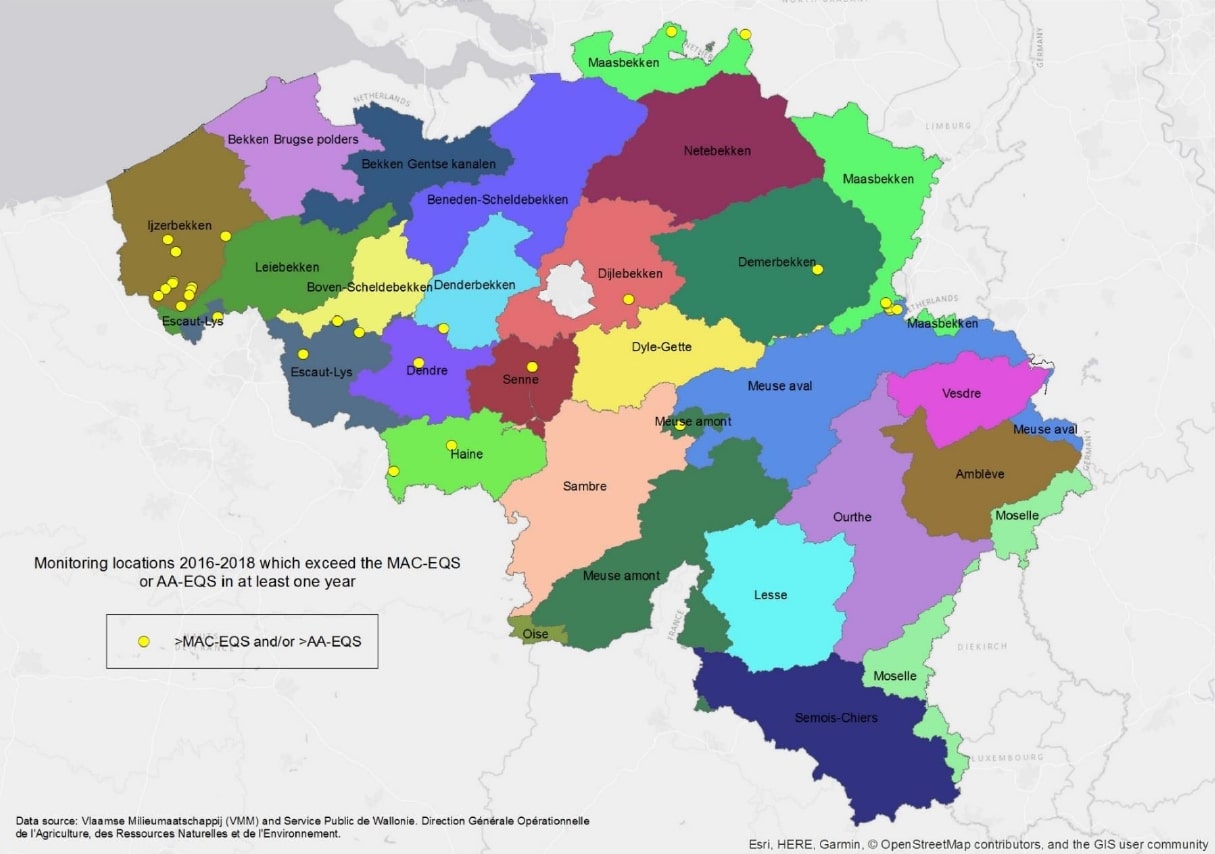Home / Reduction Plan / Charter Approach Exceedances Reference Levels Pesticides / Summary of the Emission Reduction Plan for S-metolachlor in Belgium
Summary of the Emission Reduction Plan for S-metolachlor in Belgium
Surface water monitoring data (obtained from the Flemish and Walloon regional authorities) for S-metolachlor for the period 2016-2018 were compared with acute and chronic water quality standards (MAC-EQS and AA-EQS). Based on the data, the main emission routes and vulnerable regions were identified, and a plan for reducing emissions to surface water was drawn up.
S-metolachlor is primarily (up to 80%) used as a post-emergence herbicide in maize cultivation. Minor volumes are used in the cultivation of sugar beet (15%), vegetables and ornamentals (<5%). Use mainly takes place in the months May and June. About 70% of the use occurs in Flanders.
Monitoring locations are equally distributed between Flanders and Wallonia and are distributed over most river basins, also in regions with the highest maize density. In total, more than 7100 water samples were analysed from 247 to 284 locations per year. Depending on the year, no S-metolachlor was found in 61 to 69% of the samples. About 0.5% of the measurements exceeded the MAC-EQS. The number of locations exceeding an environmental quality standard ranged from 1.6 to 4.9% (in absolute numbers 8 to 14 locations per year).

Based on the 2016-2018 monitoring data, we come to the following conclusions:
- Peak concentrations are observed in the months May-June-July.
- About 30% of the locations where the environmental standard was exceeded, appear to be related to point source emissions or incorrect/inappropriate use. We deduce this from the sometimes extreme high peak concentrations or findings well outside the use season.
- There are (nearly) no exceedances in the Kempen and the Bruges-Ghent region (relatively high maize cultivation areas).
- The majority of exceedances is located along the border between Flanders and Wallonia. In particular in the West-Vlaams Heuvelland (Kemmelbeek-Bollaertbeek), the province of Hainaut and in the surroundings of Riemst (Limburg, the Zouw).
- In these areas, the main emission route is via run-off from erosion-sensitive parcels to surface water.
The emission reduction plan therefore proposes the following specific measures:
- In Flanders, no use on fields with very high erosion risk
- In Flanders, use on fields with a high erosion risk is only accepted when a 9 m grass strip is present (at the bottom of the slope)
- In Wallonia, a similar recommendation is being developed in cooperation with Protect'eau and the Walloon Region
- In Belgium, no use on soils with a sand and loamy sand texture (groundwater protection)
- In Belgium, no use in groundwater protection areas (groundwater protection)
- Syngenta will investigate whether some of the above recommendations can be made more mandatory
Authorisation holders of S-metolachlor will also focus on general measures:
- Raise awareness through our campaigns and communication with distribution, professional applicators and growers
- Seek cooperation with third parties and Phytofar
- Further promotion of the RemDry system for collecting and treating wastewater in order to avoid point source pollution from farmyards
- Invest in development/demonstration of anti-erosion measures (e.g. microdam)
- Development/introduction of closed transfer system for filling the spray tank
- Research on band applications to reduce the overall S-metolachlor volumes used per hectare
- Effort to expand the fyteauscan with a run-off module
- Visit locations where very high concentrations have been measured (improve awareness among surrounding growers)